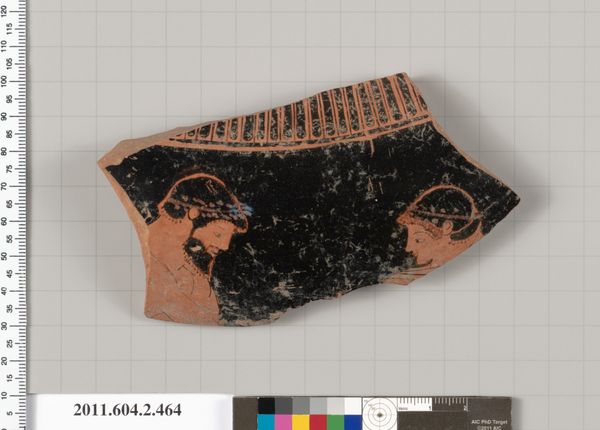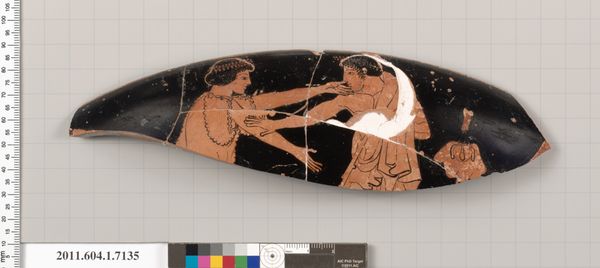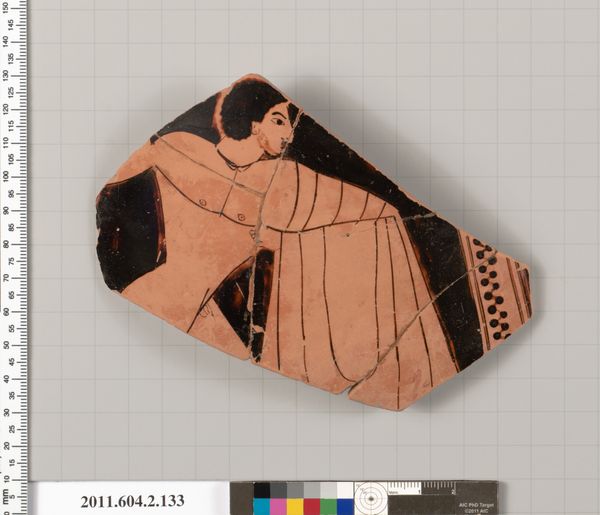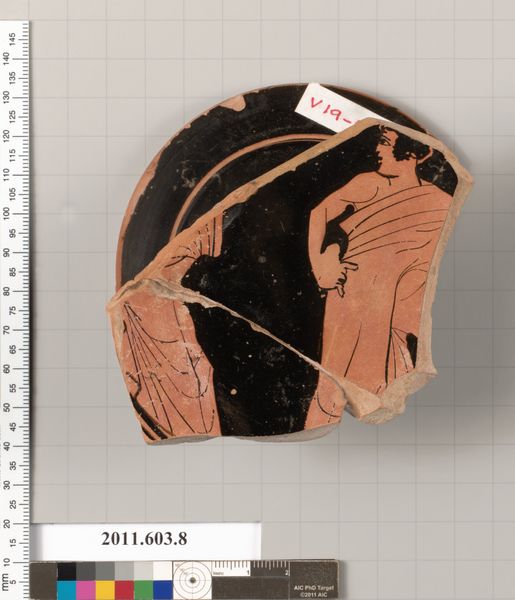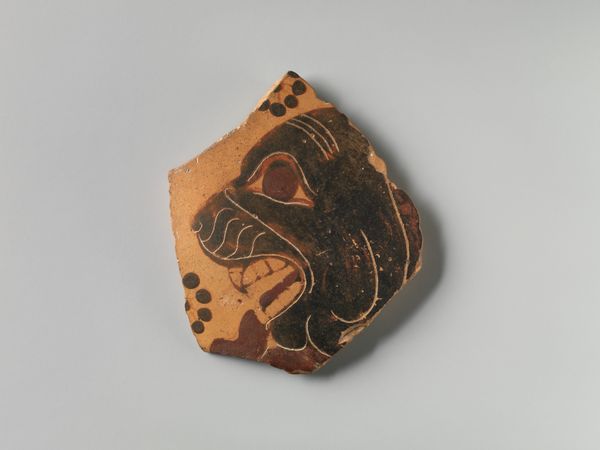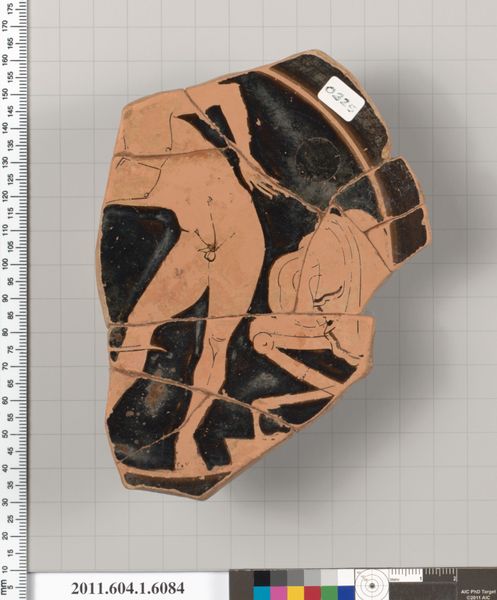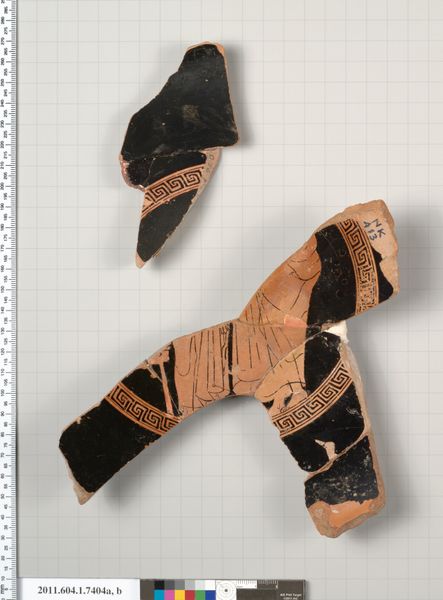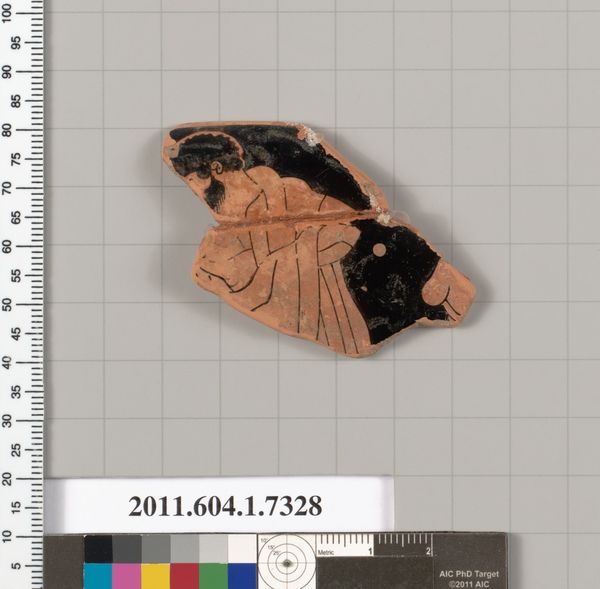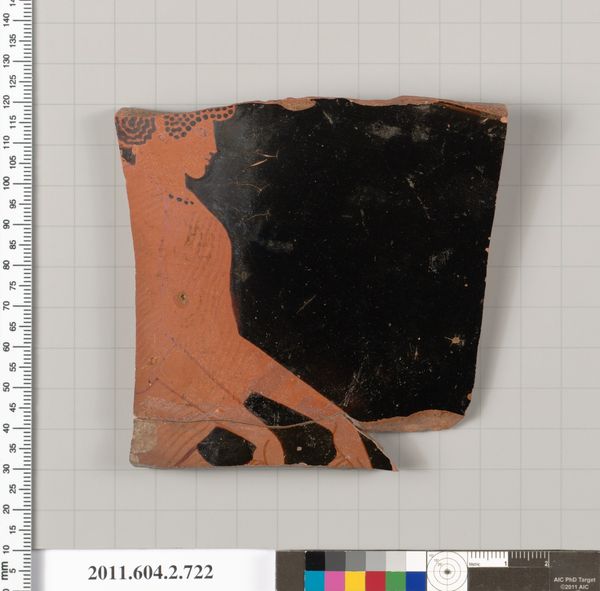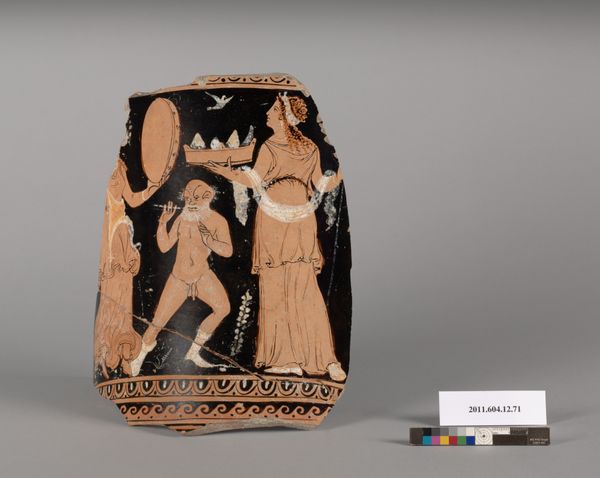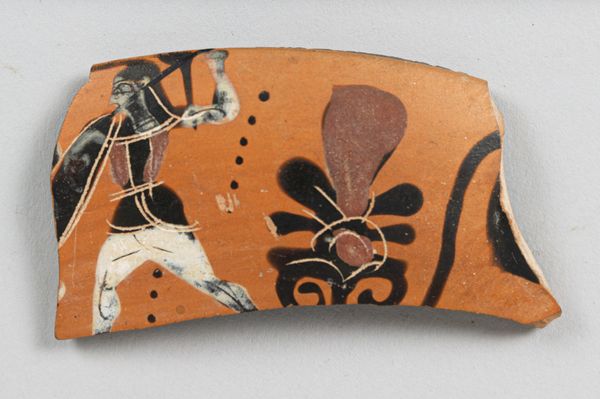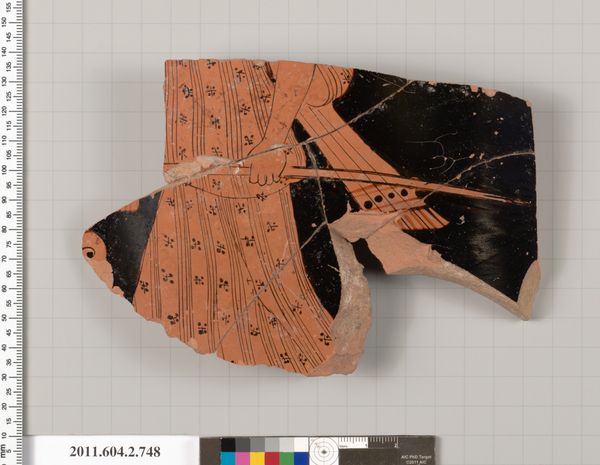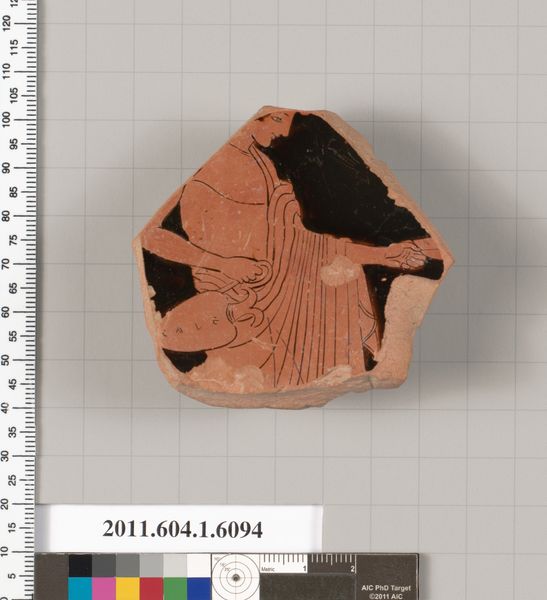
Terracotta fragment of a volute-krater (bowl for mixing wine and water) 650 BC
0:00
0:00
drawing, terracotta
#
drawing
#
narrative-art
#
greek-and-roman-art
#
figuration
#
roman-art
#
ancient-mediterranean
#
terracotta
Copyright: Public Domain
Curator: This is a fragment of a terracotta volute-krater, dating back to 650 BC. It's currently housed in the Metropolitan Museum of Art. Editor: This fragment has such a dynamic feel to it. The figures are so active, and there's a strong sense of narrative despite it being a small piece. What catches your eye about it? Curator: Note the meticulous application of black slip to create silhouettes against the terracotta ground. It is crucial to acknowledge that this conscious use of contrasting tones effectively models and highlights the musculature of these figures; do you see how each individual appears defined by its contours and shapes? Editor: Yes, that contrast really emphasizes the bodies and their movements. The person playing the flute has such an elegant, fluid posture in contrast to the more angular body on the ground. How does that inform the work as a whole? Curator: This juxtaposition between the figures could reveal a visual conversation within the composition. Consider the deliberate spacing and positioning; the negative space surrounding each form allows the eye to isolate and appreciate the intentional curves and geometric lines that define this piece. Are we looking at simple decoration, or a constructed relationship? Editor: I see what you mean! The contrast draws the eye across the piece, from one figure to the next. It’s more than just a depiction; it’s a very deliberate visual structure. Curator: Precisely. Each element, whether figurative or decorative, functions as a component in the overarching visual syntax of this work, encouraging deeper interrogation. Editor: I’ve never considered how deliberate those formal qualities could be, especially on something that, at first glance, just seemed like a decorative fragment. Curator: Examining art in terms of form brings us closer to intention and how each element plays into its structural unity. Editor: That's a really helpful framework. Thank you!
Comments
No comments
Be the first to comment and join the conversation on the ultimate creative platform.
